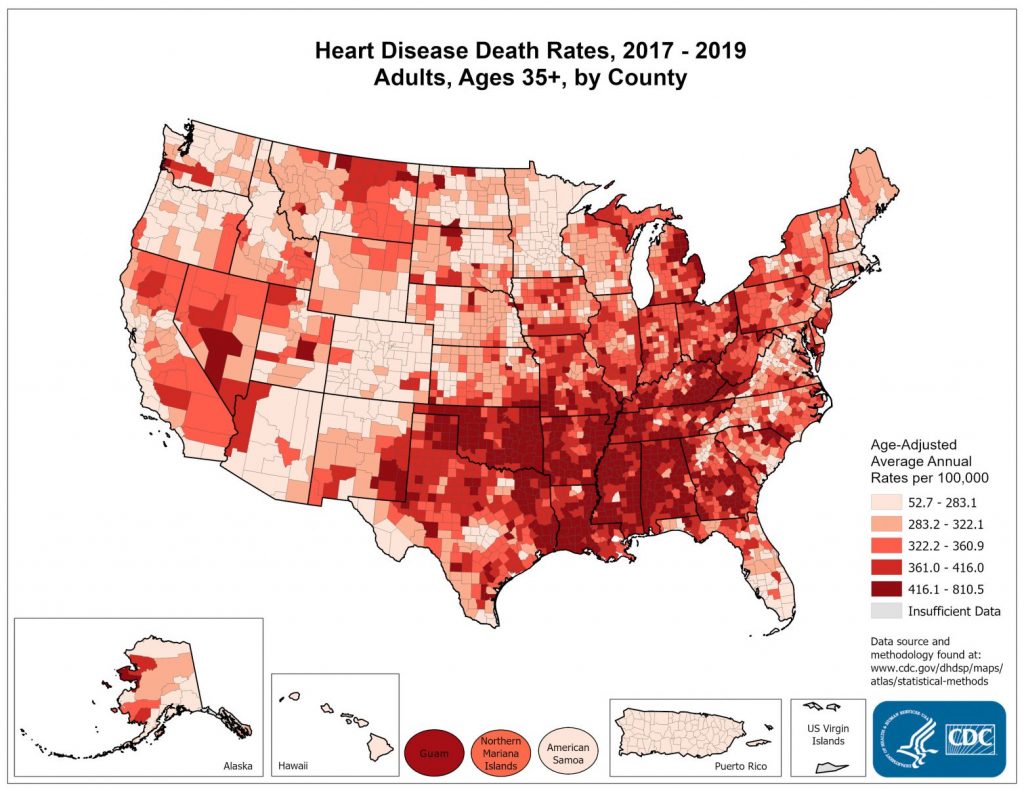Feb
08

Posted by seancorning on February 8th, 2022
Posted in: Blog
Heart disease is the leading cause of death in the United States, which is one reason that every February is American Heart Month! The goal of this month is to raise awareness of heart disease, heart heath and the steps that can be made to improve it.
Heart disease is a general term that covers several different heart conditions. The most common is coronary artery disease, effecting about 6.7% of adults. Other common heart diseases are strokes and heart failure. Coronary artery disease is when the arteries that supply blood to the heart become narrowed and hardened from build-up of cholesterol and plaque on the walls. This prevents the heart from getting the blood it needs, causing chest pain and, in the most severe cases, a heart attack.
Around 1 in every 4 deaths, 659,000 a year, are caused by heart disease. The percentages vary by population group, for example, 23.9% of Black male deaths are caused by heart disease, while 19.39% of Hispanic women deaths are caused by heart disease.
Heart disease deaths are also spread unequally geographically. The adjacent map depicts the age-adjusted average annual heard disease death rates per 100,000 by each county in the United States. The map shows that concentrations of counties with the highest heart disease death rates are located largely in Alabama, Mississippi, Louisiana, Arkansas, Oklahoma, and Guam. Even outside these areas, heart disease is clearly a major public heath concern.

There are many known risk factors to heart disease, including:
While some of these risk factors are linked to genetic factors, there are steps individuals can take to reduce their risk. The National Heart, Lung and Blood Institute has put together some excellent resources on heart healthy living. Their advice includes understanding the risks, getting blood pressure and cholesterol checked and much more. If you’d like to learn more about heart disease and some of the work being done to combat it, check out the links below:
Resources: